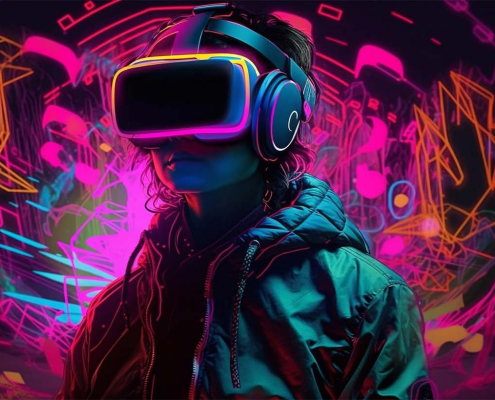Technology
NERF, Stable diffusion, CPP, Python, PyTorch
Sector
Development Service
In recent years, the video game industry has witnessed a surge in demand for immersive and visually stunning gaming experiences. Achieving realism in the virtual world relies heavily on high-quality 3D models and environments. Creating 3D meshes, which form the foundation of these models, is a resource-intensive and time-consuming process. Artificial Intelligence (AI) has emerged as a game-changing technology that can revolutionize the way 3D meshes are generated for objects in video games, streamlining the development process and enhancing overall visual appeal.
1. Develop an API-Based Service for 3D Mesh Creation: Design and implement an API-based service leveraging AI algorithms to facilitate the creation of 3D meshes for video game objects, promoting accessibility and ease of use for game developers.
2. Use AI technology to create, update 3D meshes.
3. Assess AI-Generated Mesh Quality and Efficiency: Evaluate the quality, efficiency, and scalability of AI-generated 3D meshes in comparison to conventional techniques, analyzing their potential to enhance visual appeal and streamline the development process.
The concept revolves around utilizing AI algorithms, particularly deep learning models specific to generative AI, to automate the creation of 3D meshes for objects in video games. These AI models are trained on large datasets of existing 3D models, enabling them to learn the underlying patterns and structures. Once trained, the AI can generate new 3D meshes based on the learned patterns and input parameters, effectively simulating the work of a 3D artist.
1. Data Preparation and Training
- Data Collection: Gather a diverse dataset of 3D models representing different object types and styles used in video games.
- Data Processing: Preprocess the data, ensuring consistent formatting and organizing it into suitable categories for training.
- Training the AI Model: Utilize deep learning techniques, such as diffusion models, to train the model on the prepared dataset. The model learns to generate 3D meshes by identifying patterns and structures from the input data.
2. Model Testing and Refinement
- Validation: Evaluate the AI-generated 3D meshes using various metrics, including visual quality, geometric accuracy, and suitability for the intended gaming environment.
- Refinement: Fine-tune the AI model based on feedback and iterative improvements to enhance the quality and accuracy of generated 3D meshes.
3. Integration in Game Development
- API Integration: Develop an API or software tool that integrates the trained AI model, allowing game developers to easily access and generate 3D meshes.
- Customization: Enable customization options to tweak generated 3D meshes based on specific requirements, such as style, size, or detail level.
4. Quality Assurance and User Feedback
- Quality Assessment: Conduct extensive testing of the AI-generated 3D meshes within the gaming environment to ensure they meet quality standards.
- User Feedback: Collect feedback from game developers and players to identify areas for further improvement and refinement.
Leveraging AI to create 3D meshes for objects in video games presents a promising solution to address the challenges of efficiency and quality in the traditional 3D modeling process. By automating and expediting 3D mesh generation, AI technologies can significantly reduce development time, allowing developers to focus on other aspects of game creation. Continuous refinement of AI models and integration into game development pipelines will pave the way for a future where AI-driven 3D mesh generation becomes an industry standard, transforming the landscape of video game development.
















